Musculus quadratus lumborum
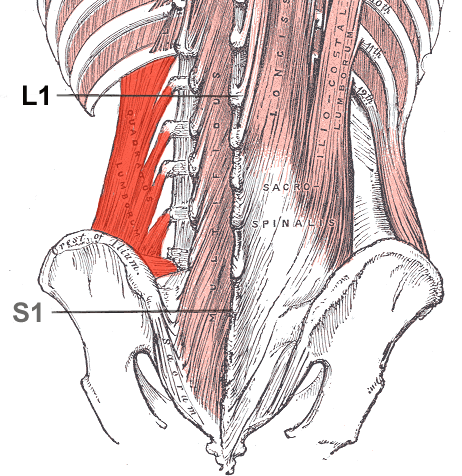
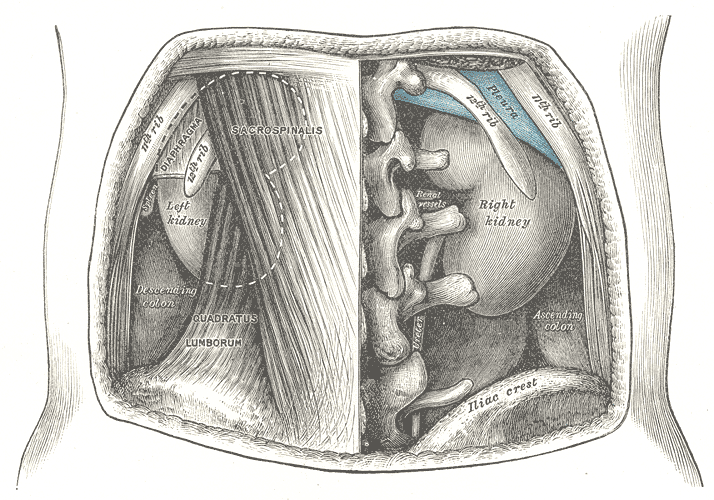
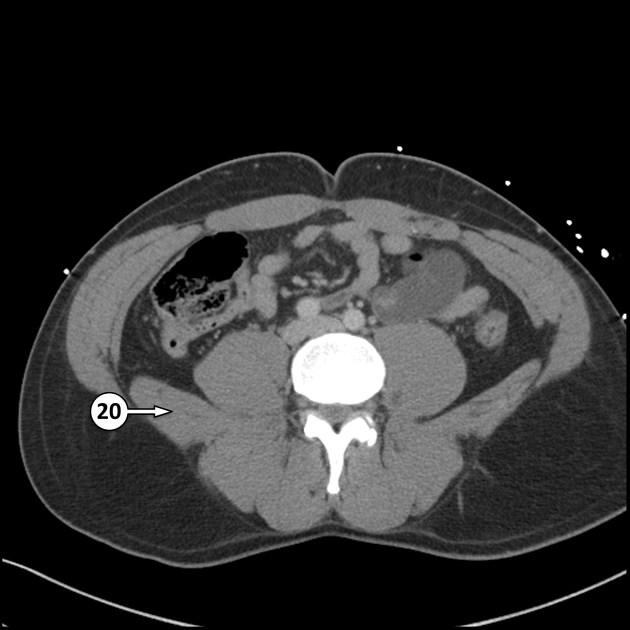
Quadratus
lumborum muscle • CT abdomen/pelvis (lower) axial - labeling questions - Ganzer Fall bei Radiopaedia
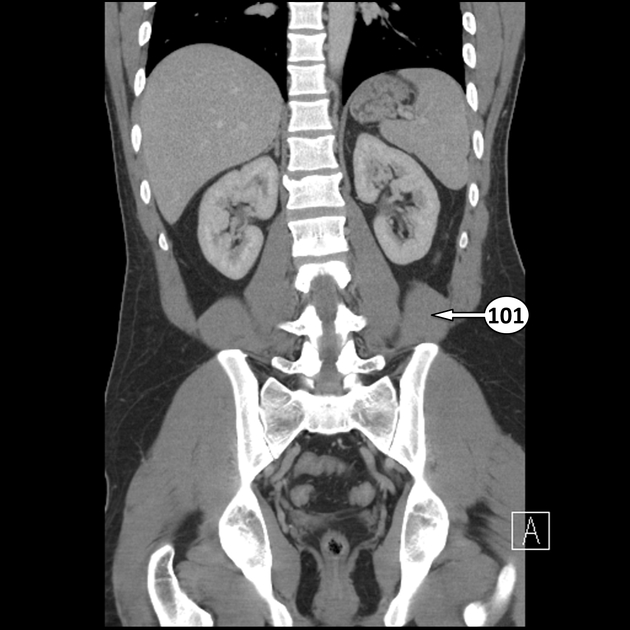
Quadratus
lumborum muscle • CT abdomen/pelvis coronal - labeling questions - Ganzer Fall bei Radiopaedia
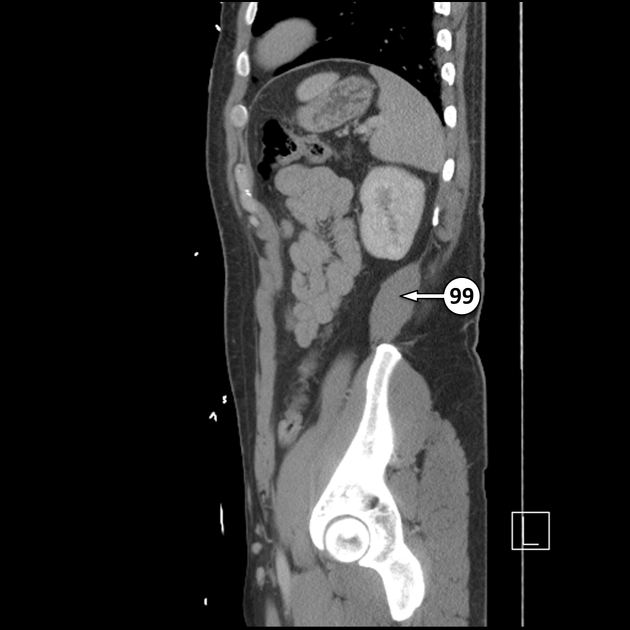
Quadratus
lumborum muscle • CT abdomen/pelvis sagittal - labeling questions - Ganzer Fall bei Radiopaedia
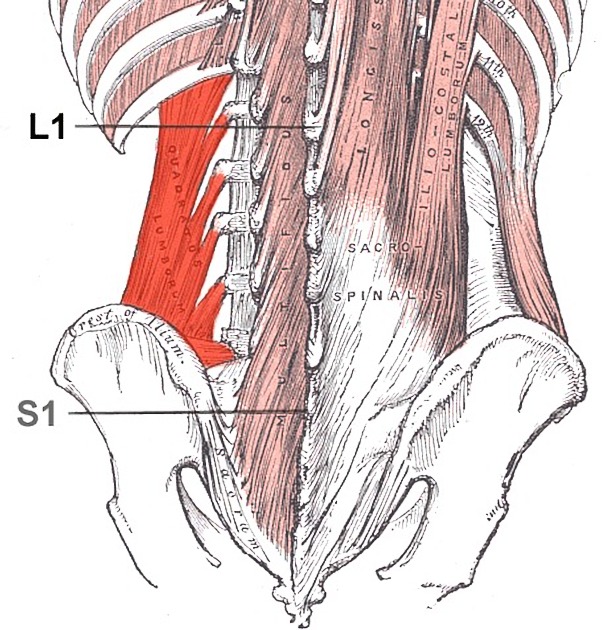
Quadratus
lumborum muscle • Quadratus lumborum muscle - Ganzer Fall bei Radiopaedia
The quadratus lumborum muscle is a paired, irregular quadrilateral muscle that forms part of the posterior abdominal wall.
Summary
- location: posterior abdominal wall
- attachments: inferior margin of 12th rib and upper four lumbar transverse processes, iliac crest and iliolumbar ligament
- blood supply
- branches of the lumbar arteries
- other smaller arterial branches, as described below
- innervation
- ventral rami of the 12th thoracic nerve
- L1-L4 spinal nerves
- action: extension and lateral flexion of vertebral column; fixes 12th rib during inspiration to stabilize the diaphragm
Gross anatomy
Attachments
- origin: medial half of inferior margin of 12th rib and upper four lumbar transverse processes
- insertion: iliolumbar ligament and internal rim of iliac crest
Relations
The muscle is a thick, irregular, quadrilateral-shaped muscle sheet that lies in the posterior abdominal wall on each side of the lumbar vertebrae. It is superficial to the psoas major muscle.
Anterior relations include:
- colon
- kidney
- psoas muscle (major and minor)
- diaphragm
- subcostal, ilioinguinal and iliohypogastric nerves
Arterial supply
The quadratus lumborum muscle is supplied by:
- branches of the lumbar arteries
- the arteria lumbalis ima
- the lumbar branch of the iliolumbar artery
- branches of the subcostal artery
Innervation
- ventral rami of the 12th thoracic nerve
- L1-L4 spinal nerves
Action
Multiple actions, including:
- muscle of inspiration
- fixation of the last rib
- stabilization of lower attachments of the diaphragm
- proposed to provide a base for controlled diaphragmatic relaxation to facilitate precise adjustments required for speech and singing
- when one muscle contracts, lateral flexion of vertebral column
- when both sides contract, extends the lumbar spine
Variant anatomy
- extent of attachment to the last rib varies
Related pathology
- implications in unilateral lower back pain
- may be enlarged in cricket fast bowlers who injure their L4 pars interarticularis
Siehe auch:
und weiter:

 Assoziationen und Differentialdiagnosen zu Musculus quadratus lumborum:
Assoziationen und Differentialdiagnosen zu Musculus quadratus lumborum:
